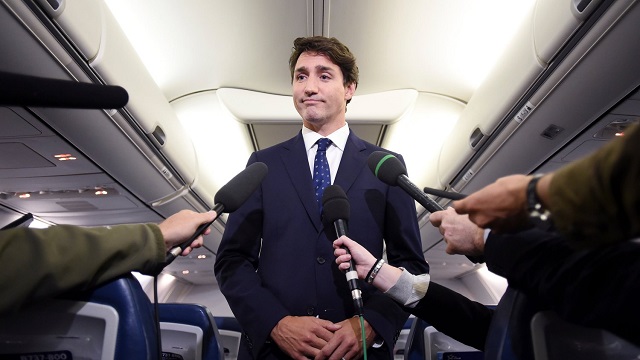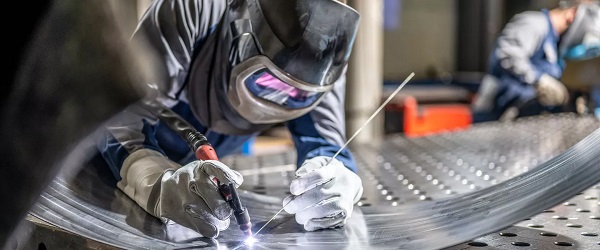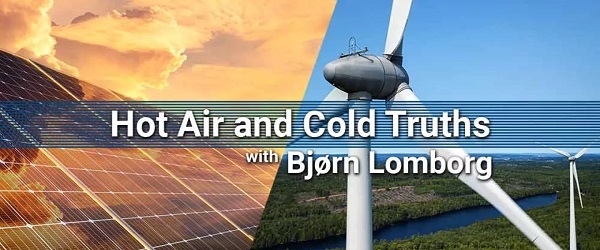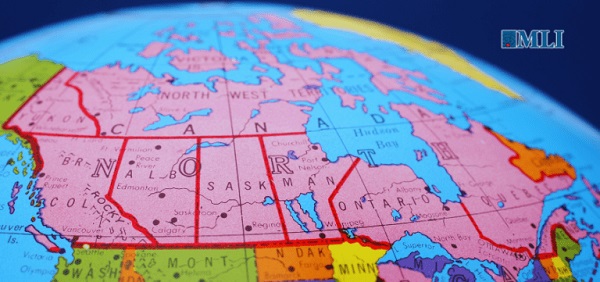Business
Trudeau’s four-day trip to Europe racks up $71,000 food bill

From the Canadian Taxpayers Federation
By Ryan Thorpe
“It would have been cheaper for each member of the prime minister’s delegation to go to the Keg, order a prime rib steak, a Caesar salad, baked garlic shrimp and a bottle of pinot noir for every meal.”
Break out the DVD player and aerate a few bottles of the 2015 Riesling, because Prime Minister Justin Trudeau has an important work trip.
The food bill for Trudeau’s four-day trip to Italy and Switzerland this June cost more than $71,000, including at least $43,000 spent on airplane food alone, according to the records.
That works out to an average meal cost of $145. Add it up and the total food bill averaged more than $1,700 per member of the Canadian delegation.
To put that in context: the average Canadian family of four spends about $1,400 on food per month, according to Canada’s Food Price Report.
“The per person food bill for Trudeau and his entourage on this trip was more than the average Canadian family spends on groceries in a month,” said Franco Terrazzano, CTF Federal Director. “It would have been cheaper for each member of the prime minister’s delegation to go to the Keg, order a prime rib steak, a Caesar salad, baked garlic shrimp and a bottle of pinot noir for every meal.”
The total taxpayer tab for the four-day trip came to nearly $1 million, according to access-to-information records obtained by the Canadian Taxpayers Federation from the Department of National Defence and the Privy Council Office.
The cost of the trip could be even higher, as “some accommodations were covered by Global Affairs Canada,” according to the records.
Trudeau travelled to Apulia, Italy, and Lucerne, Switzerland, between June 13 and 16, 2024, to attend a G7 Summit and a Summit on Peace in Ukraine.
All told, the trip cost Canadian taxpayers at least $918,000, according to the records.
Prior to take-off, government bureaucrats purchased $812 worth of junk food from a grocery store – including Red Bull, pop (Pepsi, Coke, Sprite), chocolate bars (Kit Kats, Twix’s, Reece’s Pieces) and candy (Swedish Berries, Fuzzy Peaches).
Government bureaucrats also swung by a record store and purchased $102 worth of DVDs for the flight, according to the records.
The purchases included the first season of Wednesday, a supernatural coming-of-age TV show based on the Addams Family, Madame Web, a superhero film, the sci-fi thriller Chronicle, and Witness, a 1995 crime movie starring Harrison Ford.
During the flights, the passengers were served meals that would be at home on the menu of a fine dining restaurant, alongside four types of wine – a 2021 Chardonnay, a 2015 Riesling, a 2018 Baco Noir and a 2021 Merlot.
Meals included veal piccata Milanese with potato, buttered green peas and broccoli, and lamb ribs with whole grain mustard sauce, rice pilaf and sauteed spinach.
Other dinner options included cheese ravioli with rose sauce, roasted red peppers and parmesan cheese, grilled chicken with lemon caper sauce, mashed potatoes and glazed carrots, and beef stroganoff with buttered noodles and snow peas.
For dessert, passengers chose between raspberry cheesecake coulis, chocolate and pistachio cake and Swiss chocolate cake.
“I like Sydney Sweeney as much as the next guy, but maybe Trudeau could do some actual work or download a movie on Netflix the next time he flies, instead of billing taxpayers for a DVD copy of Madame Web,” Terrazzano said. “While he’s at it, maybe Trudeau could forgo the Swiss chocolate cake while Canadians back home are lining up at food banks in record numbers.”
Trudeau travelled with an entourage ranging from 36 to 41 people during the four-day trip, including two coordinators of digital and creative content, a videographer, and a photographer, according to the records.
This is far from the first time a short trip for Trudeau meant a big bill for taxpayers.
Trudeau’s six-day trip to the Indo-Pacific region in September 2023 included more than $223,000 spent on airplane food, according to records obtained by the CTF.
That entire trip came with a taxpayer tab of nearly $2 million.
In 2022, Stewart Wheeler, who was Canada’s chief of protocol at the time, told a Parliamentary committee the government would bring down the cost of international travel.
“We recognize that the system that we had in place was not delivering the kind of oversight and control that Canadian taxpayers deserve,” Wheeler said.
Wheeler’s comments came after Governor General Mary Simon spent $100,000 on inflight catering during a nine-day trip to the Middle East in March 2022.
“The government promised to bring the cost of international travel down, but taxpayers are still getting stuck with outrageous bills,” Terrazzano said. “The government needs to figure out how to fly overseas without spending more on food in a few days than four families spend on groceries in an entire year.”
Business
Cuba has lost 24% of it’s population to emigration in the last 4 years

 MxM News
MxM News
Quick Hit:
A new study finds Cuba has lost nearly a quarter of its population since 2020, driven by economic collapse and a mass emigration wave unseen outside of war zones. The country’s population now stands at just over 8 million, down from nearly 10 million.
Key Details:
- Independent study estimates Cuba’s population at 8.02 million—down 24% in four years.
- Over 545,000 Cubans left the island in 2024 alone—double the official government figure.
- Demographer warns the crisis mirrors depopulation seen only in wartime, calling it a “systemic collapse.”
Diving Deeper:
Cuba is undergoing a staggering demographic collapse, losing nearly one in four residents over the past four years, according to a new study by economist and demographer Juan Carlos Albizu-Campos. The report estimates that by the end of 2024, Cuba’s population will stand at just over 8 million people—down from nearly 10 million—a 24% drop that Albizu-Campos says is comparable only to what is seen in war-torn nations.
The study, accessed by the Spanish news agency EFE, points to mass emigration as the primary driver. In 2024 alone, 545,011 Cubans are believed to have left the island. That number is more than double what the regime officially acknowledges, as Cuba’s government only counts those heading to the United States, ignoring large flows to destinations like Mexico, Spain, Serbia, and Uruguay.
Albizu-Campos describes the trend as “demographic emptying,” driven by what he calls a “quasi-permanent polycrisis” in Cuba—an interwoven web of political repression, economic freefall, and social decay. For years, Cubans have faced food and medicine shortages, blackout-plagued days, fuel scarcity, soaring inflation, and a broken currency system. The result has been not just migration, but a desperate stampede for the exits.
Yet, the regime continues to minimize the damage. Official figures from the National Office of Statistics and Information (ONEI) put Cuba’s population at just over 10 million in 2023. However, even those numbers acknowledge a shrinking population and the lowest birth rate in decades—confirming the crisis, if not its full scale.
Cuba hasn’t held a census since 2012. The last scheduled one in 2022 has been repeatedly delayed, allegedly due to lack of resources. Experts doubt that any new attempt will be transparent or complete.
Albizu-Campos warns that the government’s refusal to confront the reality of the collapse is obstructing any chance at solutions. More than just a demographic issue, the study describes Cuba’s situation as a “systemic crisis.”
“Havana (Cuba, February 2023)” by Bruno Rijsman licensed under CC BY-SA 2.0 DEED.
Business
Tariff-driven increase of U.S. manufacturing investment would face dearth of workers

From the Fraser Institute
Since 2015, the number of American manufacturing jobs has actually risen modestly. However, as a share of total U.S. employment, manufacturing has dropped from 30 per cent in the 1970s to around 8 per cent in 2024.
Donald Trump has long been convinced that the United States must revitalize its manufacturing sector, having—unwisely, in his view—allowed other countries to sell all manner of foreign-produced manufactured goods in the giant American market. As president, he’s moved quickly to shift the U.S. away from its previous embrace of liberal trade and open markets as cornerstones of its approach to international economic policy —wielding tariffs as his key policy instrument. Since taking office barely two months ago, President Trump has implemented a series of tariff hikes aimed at China and foreign producers of steel and aluminum—important categories of traded manufactured goods—and threatened to impose steep tariffs on most U.S. imports from Canada, Mexico and the European Union. In addition, he’s pledged to levy separate tariffs on imports of automobiles, semi-conductors, lumber, and pharmaceuticals, among other manufactured goods.
In the third week of March, the White House issued a flurry of news releases touting the administration’s commitment to “position the U.S. as a global superpower in manufacturing” and listing substantial new investments planned by multinational enterprises involved in manufacturing. Some of these appear to contemplate relocating manufacturing production in other jurisdictions to the U.S., while others promise new “greenfield” investments in a variety of manufacturing industries.
President Trump’s intense focus on manufacturing is shared by a large slice of America’s political class, spanning both of the main political parties. Yet American manufacturing has hardly withered away in the last few decades. The value of U.S. manufacturing “output” has continued to climb, reaching almost $3 trillion last year (equal to 10 per cent of total GDP). The U.S. still accounts for 15 per cent of global manufacturing production, measured in value-added terms. In fact, among the 10 largest manufacturing countries, it ranks second in manufacturing value-added on a per-capita basis. True, China has become the world’s biggest manufacturing country, representing about 30 per cent of global output. And the heavy reliance of Western economies on China in some segments of manufacturing does give rise to legitimate national security concerns. But the bulk of international trade in manufactured products does not involve goods or technologies that are particularly critical to national security, even if President Trump claims otherwise. Moreover, in the case of the U.S., a majority of two-way trade in manufacturing still takes place with other advanced Western economies (and Mexico).
In the U.S. political arena, much of the debate over manufacturing centres on jobs. And there’s no doubt that employment in the sector has fallen markedly over time, particularly from the early 1990s to the mid-2010s (see table below). Since 2015, the number of American manufacturing jobs has actually risen modestly. However, as a share of total U.S. employment, manufacturing has dropped from 30 per cent in the 1970s to around 8 per cent in 2024.
| U.S. Manufacturing Employment, Select Years (000)* | |
|---|---|
| 1990 | 17,395 |
| 2005 | 14,189 |
| 2010 | 14,444 |
| 2015 | 12,333 |
| 2022 | 12,889 |
| 2024 | 12,760 |
| *December for each year shown. Source: U.S. Bureau of Labor Statistics | |
Economists who have studied the trend conclude that the main factors behind the decline of manufacturing employment include continuous automation, significant gains in productivity across much of the sector, and shifts in aggregate demand and consumption away from goods and toward services. Trade policy has also played a part, notably China’s entry into the World Trade Organization (WTO) in 2001 and the subsequent dramatic expansion of its role in global manufacturing supply chains.
Contrary to what President Trump suggests, manufacturing’s shrinking place in the overall economy is not a uniquely American phenomenon. As Harvard economist Robert Lawrence recently observed “the employment share of manufacturing is declining in mature economies regardless of their overall industrial policy approaches. The trend is apparent both in economies that have adopted free-market policies… and in those with interventionist policies… All of the evidence points to deep and powerful forces that drive the long-term decline in manufacturing’s share of jobs and GDP as countries become richer.”
This brings us back to the president’s seeming determination to rapidly ramp up manufacturing investment and production as a core element of his “America First” program. An important issue overlooked by the administration is where to find the workers to staff a resurgent U.S. manufacturing sector. For while manufacturing has become a notably “capital-intensive” part of the U.S. economy, workers are still needed. And today, it’s hard to see where they will be found. This is especially true given the Trump administration’s well-advertised skepticism about the benefits of immigration.
According to the U.S. Bureau of Labor Statistics, the current unemployment rate across America’s manufacturing industries collectively stands at a record low 2.9 per cent, well below the economy-wide rate of 4.5 per cent. In a recent survey by the National Association of Manufacturers, almost 70 per cent of American manufacturers cited the inability to attract and retain qualified employees as the number one barrier to business growth. A cursory look at the leading industry trade journals confirms that skill and talent shortages remain persistent in many parts of U.S. manufacturing—and that shortages are destined to get worse amid the expected significant jump in manufacturing investment being sought by the Trump administration.
As often seems to be the case with Trump’s stated policy objectives, the math surrounding his manufacturing agenda doesn’t add up. Manufacturing in America is in far better shape than the president acknowledges. And a tariff-driven avalanche of manufacturing investment—should one occur—will soon find the sector reeling from an unprecedented human resource crisis.
Jock Finlayson
Senior Fellow, Fraser Institut
-

 Business1 day ago
Business1 day ago28 energy leaders call for eliminating ALL energy subsidies—even ones they benefit from
-

 2025 Federal Election1 day ago
2025 Federal Election1 day agoCarney’s Cap on Alberta Energy Costing Canada Billions
-

 Business1 day ago
Business1 day agoTrump Tariffs are not going away. Canada needs to adapt or face the consequences
-

 Economy21 hours ago
Economy21 hours agoSupport For National Pipelines And LNG Projects Gain Momentum, Even In Quebec
-

 Health1 day ago
Health1 day agoDr. Pierre Kory Exposes the Truth About the Texas ‘Measles Death’ Hoax
-

 Economy22 hours ago
Economy22 hours agoSolar and Wind Power Are Expensive
-

 Business24 hours ago
Business24 hours agoAll party leaders must oppose April 1 alcohol tax hike
-

 Business23 hours ago
Business23 hours agoWhy a domestic economy upgrade trumps diversification


